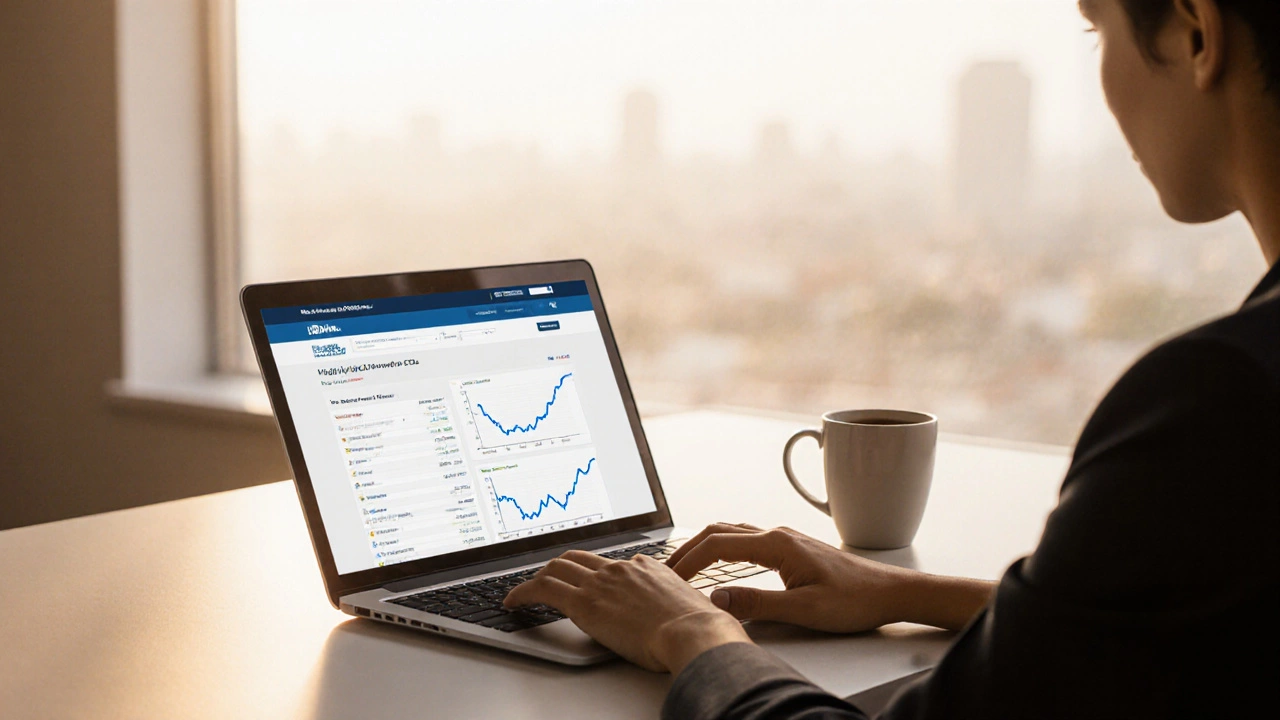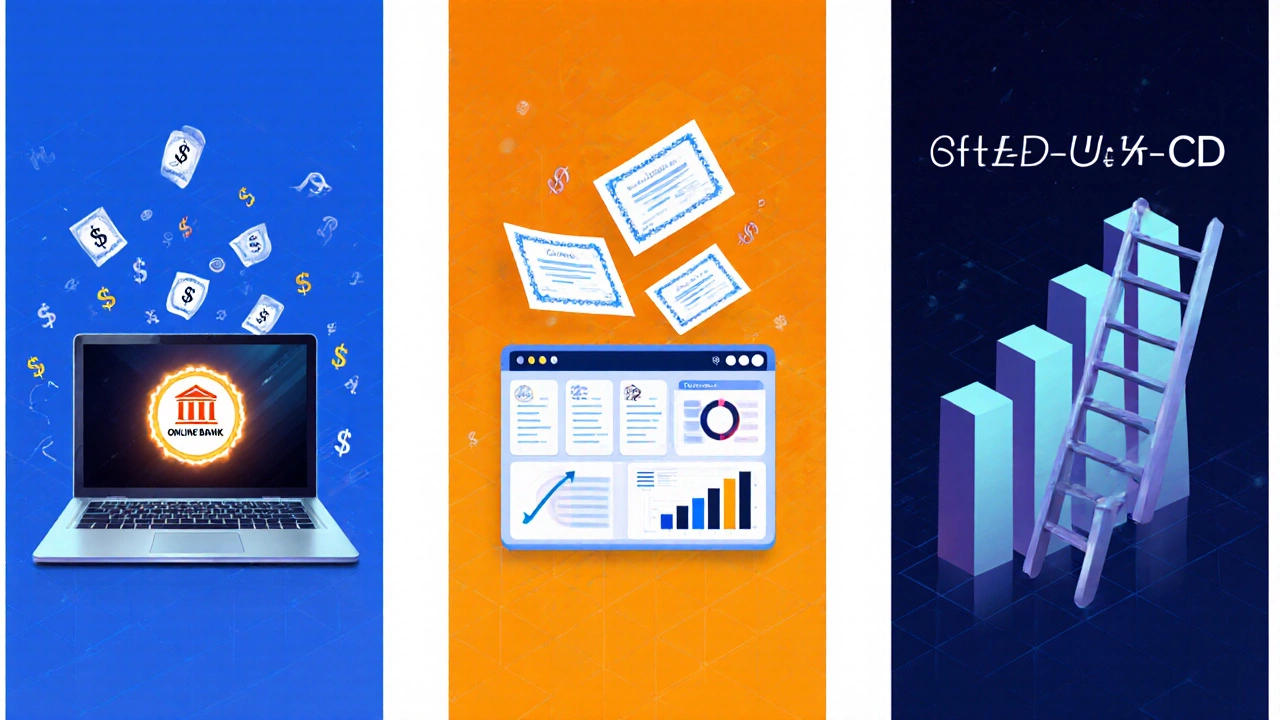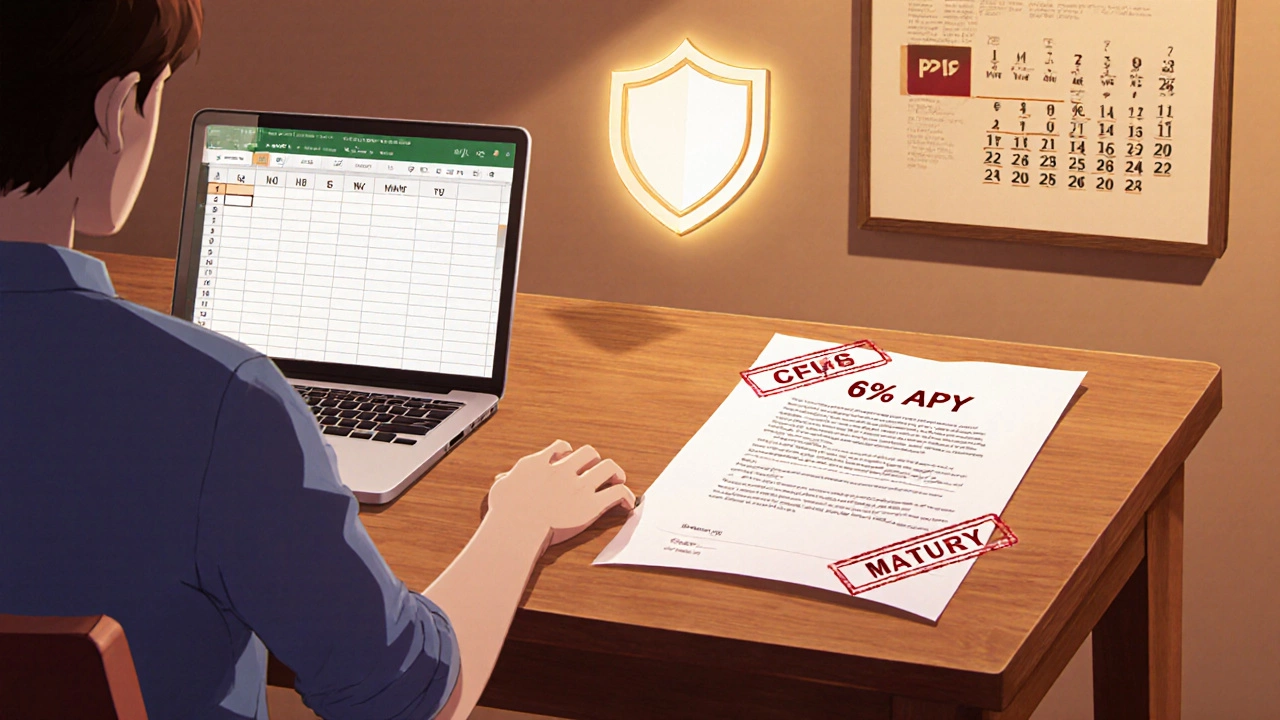
CD Rate Calculator
Calculate Your CD Returns
See how much you could earn with different CD rates and terms. Input your investment amount, select the term length, and choose your target interest rate to see potential returns.
Your Potential Returns
Rate Comparison
Compare your CD rate against alternatives mentioned in the article:
- High-Yield Savings: 4.5%-5.5% APY
- 12-Month Treasury Bill: ~5.0% APY
- Money Market Funds: 4.0%-5.0% APY
Important Notes
Your actual return may vary based on market conditions. Rates shown are based on current market data and may not reflect future rates.
Remember: CD interest is taxable as ordinary income. Consider tax-advantaged accounts if you qualify.
Ever wondered if a 6% CD is still possible in today’s low‑rate world? The short answer is yes, but it takes a bit of digging and the right timing. Below we break down where those juicy rates live, how to chase them safely, and what to watch out for.
TL;DR
- 6% APY on a Certificate of Deposit (CD) can appear in high‑yield online banks, credit unions, or brokered CD platforms.
- Look for terms of 12‑36 months, promotional offers, or market‑linked CDs.
- Make sure the institution is FDIC or NCUSIF insured and understand early‑withdrawal penalties.
- If you can’t lock 6%, consider high‑yield savings or short‑term Treasury bills as alternatives.
What a Certificate of Deposit Actually Is
Certificate of Deposit is a time‑bound deposit product offered by banks and credit unions that pays a fixed interest rate for a set term. You agree not to touch the money until the term ends, and in exchange you lock in the advertised rate.
When Does a 6% Rate Make Sense?
Interest rates move with the Federal Reserve’s policy and the broader yield curve. In 2024 the Fed’s target range hovered around 5.25‑5.5%, which opened the door for banks to offer CD rates in the 5‑6% range, especially for longer terms or promotional periods. By October 2025, most traditional bricks‑and‑mortar banks have settled back to 3‑4% APY, but a handful of online‑only banks and credit unions still push 5‑6% to attract new deposits.

Types of CDs That Can Hit 6%
Not every CD is created equal. Here are the three main flavors you’ll see with double‑digit yields:
- High‑Yield Online CDs: Digital banks like Ally or Discover sometimes launch promotional 12‑month CDs at 5.75‑6% APY to grow their balance sheets quickly.
- Brokered CDs: Brokerage platforms (e.g., Vanguard, Fidelity) sell CDs from multiple issuers. Because they can source from smaller regional banks that need funding, you’ll find rates up to 6% for terms of 24‑36 months.
- Market‑Linked or “Step‑Up” CDs: These CDs start with a lower rate but increase annually, often ending at around 6% after three years. They’re a middle ground between fixed and variable returns.
How to Hunt Down a 6% CD
Follow this simple roadmap and you’ll know exactly where to look:
- Start with rate‑comparison sites like NerdWallet, Bankrate, or myBankTracker. Filter results to 12‑month or longer terms and sort by APY.
- Check online‑only banks. They often post their best rates on the homepage. Look for “new‑customer promotional CD” language.
- Visit credit union portals. Membership may be open‑door (e.g., based on geography or employer). Credit unions frequently offer higher rates than big banks.
- Explore brokered CD platforms. Open a brokerage account if you don’t have one, then browse the CD marketplace for “6%” filters.
- Verify insurance. Make sure the CD is covered by FDIC for banks, or NCUSIF for credit unions up to $250,000 per depositor.
- Read the fine print on penalties. Early‑withdrawal fees can eat a chunk of that 6% if you need the money before maturity.
Pros and Cons of Chasing a High‑Yield CD
Every financial move has trade‑offs. Here’s a quick reality check:
- Pros
- Fixed return - you know exactly what you’ll earn.
- Low risk - FDIC/NCUSIF insurance protects your principal.
- Higher yield than most traditional savings accounts.
- Cons
- Liquidity constraints - cash is locked until the term ends.
- Early‑withdrawal penalties can reduce the effective APY.
- Promotional rates may require a large minimum deposit (often $5,000‑$10,000).
Alternative Safe Havens If 6% Isn’t Available
Sometimes the market simply won’t offer that sweet spot. Consider these options, each with its own risk‑return profile:
- High‑Yield Savings Account offers flexible access with APY typically ranging from 4.5‑5.5% at top online banks.
- Treasury Bills short‑term government securities that currently yield around 5% for 12‑month maturities.
- Money Market Funds mutual funds that invest in short‑term debt and usually return 4‑5% with daily liquidity.
- Short‑Term Bond ETFs track a basket of 1‑3 year corporate or municipal bonds, delivering yields in the 5‑6% range but with modest price volatility.

Quick Comparison Table
| Product | Typical APY | Liquidity | Insurance/Guarantee | Minimum Deposit |
|---|---|---|---|---|
| High‑Yield CD (12‑36mo) | 5.75‑6.00% | Locked until maturity | FDIC/NCUSIF | $5,000 |
| High‑Yield Savings | 4.50‑5.50% | Daily access | FDIC/NCUSIF | $0 |
| 12‑Month Treasury Bill | ≈5.00% | Available at maturity | U.S. government guarantee | $100 |
| Money Market Fund | 4.00‑5.00% | Daily withdrawals | Not FDIC insured | $1,000 |
Common Pitfalls and How to Avoid Them
Even with a solid plan, a few mistakes can turn a good rate into a hidden loss:
- Ignoring the penalty structure: Some CDs charge a penalty equal to six months of interest. Always calculate the net return if you might need the cash early.
- Over‑concentrating in one institution: FDIC insurance caps at $250,000 per bank. Spread large deposits across multiple insured banks to stay fully covered.
- Missing the promotional window: Promotional rates often expire after 30‑60 days. Set a reminder to lock in the rate before it drops.
- Forgetting tax implications: CD interest is taxable as ordinary income. Use a tax‑advantaged account (like an IRA) if you qualify, which can boost after‑tax yields.
Next Steps - Put Your Money to Work
Ready to chase that 6%? Here’s a bite‑size action plan:
- Open a comparison spreadsheet and list at least three online banks and two credit unions.
- Filter for terms of 12‑36 months and APY ≥5.75%.
- Verify each institution’s FDIC/NCUSIF coverage and note any early‑withdrawal penalties.
- Decide how much you’re comfortable locking away (minimum $5,000 each is typical).
- Complete the online application, fund the CD, and set a calendar reminder for the maturity date.
Frequently Asked Questions
Can I really get a 6% CD in 2025?
Yes, but you’ll likely need to look at online‑only banks, credit unions, or brokered CD platforms, and be ready to lock in a term of 12‑36 months.
Is a 6% CD safe?
It’s safe as long as the institution is FDIC‑insured (for banks) or NCUSIF‑insured (for credit unions) up to $250,000 per depositor.
What’s the difference between APY and interest rate?
APY (Annual Percentage Yield) includes the effect of compounding, while the nominal interest rate does not. For CDs, banks usually quote APY because it shows the true annual return.
Do I have to keep the entire amount in the CD for the full term?
You can withdraw early, but a penalty-often several months of interest-will be applied, which can lower your effective yield dramatically.
Are brokered CDs covered by FDIC?
Yes, each individual CD sold through a broker is FDIC‑insured up to the standard $250,000 limit, provided the issuing bank is an FDIC member.





Write a comment